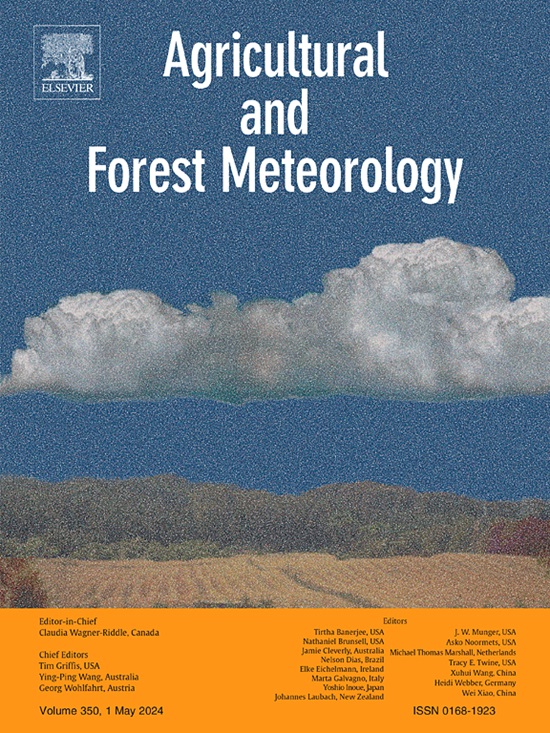Complex interactions of "water-light-heat" climatic conditions on spring phenology in the mid-high latitudes of the Northern Hemisphere
IF 5.6
1区 农林科学
Q1 AGRONOMY
引用次数: 0
Abstract
The mid-high latitudes of the Northern Hemisphere are one of the major gathering areas of global vegetation, playing a key role in regulating the climate and carbon cycle. Studying the interactive effects of vegetation phenological dynamics and climate change will help predict future vegetation dynamics and ecological protection. However, the response of vegetation phenology to multi-dimensional climatic factors is still unclear, and the spatiotemporal heterogeneity of their contributions to phenological changes and the complex interactions between them are not yet determined. This study used the solar-induced chlorophyll fluorescence (SIF) to invert accurate spring phenological parameters, and combined ERA5-Land datasets to obtain "water-light-heat" multi-dimensional climatic factors. We quantified the responses of the start of the growing season (SOS) to climate factors and the contributions and spatiotemporal heterogeneity of climate impacts, and discovered the complex relationships and influences. The results show that SOS predominantly occurred between 140-160 days during 2001–2020. SOS was slowly delayed until 2009, and then advanced before that. The climate sensitivity of SOS has obvious spatial differences, and different gradient levels of climate factors significantly affect the sensitivity of SOS. Furthermore, temperature, precipitation, and solar radiation are the dominant factors affecting SOS. Their contributions to SOS changes show obvious latitude patterns, with relative contributions and dominant areas varying across different sub-periods, but temperature consistently controlled the most area of SOS changes. This study reveals the complex interactions and mechanisms between climate change and spring phenology of vegetation on a large scale, aiding in predicting and addressing potential future ecological changes.
北半球中高纬度地区 "水-光-热 "气候条件对春季物候的复杂相互作用
本文章由计算机程序翻译,如有差异,请以英文原文为准。
求助全文
约1分钟内获得全文
求助全文
来源期刊
CiteScore
10.30
自引率
9.70%
发文量
415
审稿时长
69 days
期刊介绍:
Agricultural and Forest Meteorology is an international journal for the publication of original articles and reviews on the inter-relationship between meteorology, agriculture, forestry, and natural ecosystems. Emphasis is on basic and applied scientific research relevant to practical problems in the field of plant and soil sciences, ecology and biogeochemistry as affected by weather as well as climate variability and change. Theoretical models should be tested against experimental data. Articles must appeal to an international audience. Special issues devoted to single topics are also published.
Typical topics include canopy micrometeorology (e.g. canopy radiation transfer, turbulence near the ground, evapotranspiration, energy balance, fluxes of trace gases), micrometeorological instrumentation (e.g., sensors for trace gases, flux measurement instruments, radiation measurement techniques), aerobiology (e.g. the dispersion of pollen, spores, insects and pesticides), biometeorology (e.g. the effect of weather and climate on plant distribution, crop yield, water-use efficiency, and plant phenology), forest-fire/weather interactions, and feedbacks from vegetation to weather and the climate system.

 求助内容:
求助内容: 应助结果提醒方式:
应助结果提醒方式:


